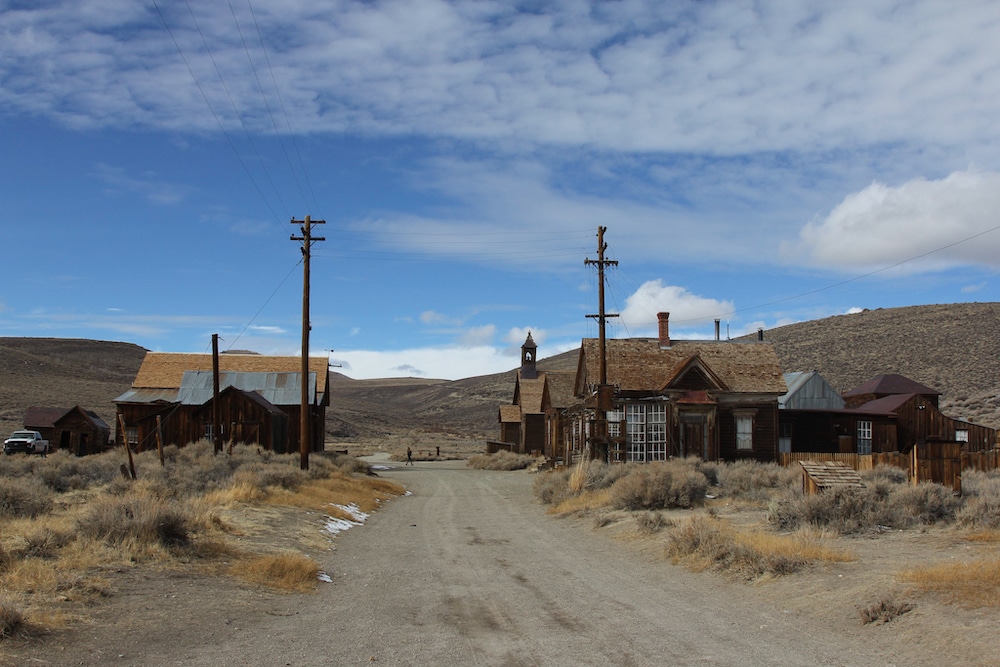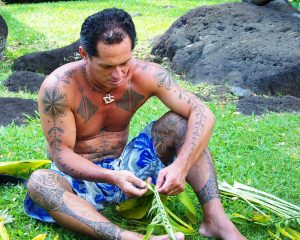
In a world with so many countries, religions, tribes and customs comes many quirky traditions unique to many destinations. Culture and traditions vary hugely around the world and they are a huge part of what makes our planet such a diverse and fascinating place to live. From food and festival traditions to legends and superstitions, here, we look at the world’s quirkiest traditions. Food for thought for when we can travel again?
FOOD
You want fries on that? The Pittsburgh Primanti Sandwich

Unknown to many, Pittsburgh is home to some world famous food and drink creations. Henry John Heinz created the H.J. Heinz Company in 1869 (here starts the world’s love affair with the red stuff), Rye Whiskey in the rebirth of the rebellion and not to mention the creation of the Big Mac! A local favourite however is the Primanti Sandwich. Founded in 1933, the Primanti Brothers Primanti Sandwich has become the most famous meal in Pittsburgh. Made of grilled meat, an Italian dressing-based coleslaw, tomato and French fries (yes in the sandwich) all stacked between two thick slices of fresh Italian bread.
Toast the legend at sunset in Florida’s Paradise Coast
In Southwest Florida, legend has it that a spirit in the form of a bright green flash appears on the horizon every evening at sunset to mark the end of the day. Naples Beach Hotel and Golf Club created ‘The Green Flash’ cocktail in homage to this daily event and celebrates the tradition every night at 6pm with fire dancers and drinks specials in their beach bar. The sweet cocktail includes a blend of coconut rum, midori and crème de banana topped with lemonade.
KFC chicken not turkey for Christmas dinner in Japan
The undisputed Christmas dinner in Japan is the KFC family bucket, thanks to KFC Japan’s long running ‘Kentucky for Christmas’ campaign, which began in 1974 and has firmly established fried chicken as a Christmas staple. It is so popular orders are made several months in advance.
FESTIVALS & EVENTS
How lazy are you? World Championships held annually in Montenegro
Similar to the Irish, Montenegrins have a very relaxed attitude towards life, choosing to relax first and live as much of a stress-free life as possible. So much so, over the past decade the country has hosted its own World Championships of laziness. Hosted in the sleepy inland town of Brezna, the aim of the competition is to lie down for the longest amount of time with the current record standing at 37 hours.
Bacon Appreciation Day – Buttermilk, Aspen Snowmass
 In celebration of Buttermilk’s closing day, the mountain hosts the annual Bacon Appreciation Day, featuring a schedule of all things bacon including bacon waffles, bacon doughnuts, bacon samplers around the mountain, and a bacon and beer happy hour. In conjunction with Bacon Appreciation Day, Buttermilk also hosts an uphilling event called ‘Fueled by Bacon Sizzle Up’ with prizes for the Best Costume, the Center Cut (person who is in the middle of the pack) and for the fastest!
In celebration of Buttermilk’s closing day, the mountain hosts the annual Bacon Appreciation Day, featuring a schedule of all things bacon including bacon waffles, bacon doughnuts, bacon samplers around the mountain, and a bacon and beer happy hour. In conjunction with Bacon Appreciation Day, Buttermilk also hosts an uphilling event called ‘Fueled by Bacon Sizzle Up’ with prizes for the Best Costume, the Center Cut (person who is in the middle of the pack) and for the fastest!
Coyote Howlin’ in Coulterville, Yosemite Mariposa
The old Gold Rush town of Coulterville is home to an odd tradition – Coyote Howling! Once a year the community gathers for CoyoteFest, held on Coulterville’s Historic Main St, where there are crafts, food and, the town’s very own Coyote Howling Contest. The contest has four divisions – adult, child, pup and adult packs! Competition is fierce between those who return each year to defend their title with barks, yelps and howls. The overall theme of the fest is to celebrate the Coyote, a nocturnal pack animal that is commonly seen, but more often heard, in the foothills surrounding Coulterville.
The winter sport you’ve never heard of – Skijoring in Steamboat, Colorado
 Ever tried skiing with a horse? No, nor have we. Skijoring, derived from a closely-related Norwegian word, skikjøring, which means “ski driving”, consists of a rider, a horse and a skier. The rider rides (drives) the horse while the skier is pulled by a long hemp rope from behind the horse – a bit like water-skiing but with less boats and sunshine. When people see it they think it should be only for adults, but in Steamboat, Colorado it’s the kids who take it pretty seriously. Skijoring has been a part of Steamboat’s history for over 100 years, and it’s celebrated every February during the Winter Carnival. The carnival, now in its 108 year, is a celebration of Steamboat’s Western heritage and was started as a way to help residents cope with cabin fever during the height of the Colorado winter season.
Ever tried skiing with a horse? No, nor have we. Skijoring, derived from a closely-related Norwegian word, skikjøring, which means “ski driving”, consists of a rider, a horse and a skier. The rider rides (drives) the horse while the skier is pulled by a long hemp rope from behind the horse – a bit like water-skiing but with less boats and sunshine. When people see it they think it should be only for adults, but in Steamboat, Colorado it’s the kids who take it pretty seriously. Skijoring has been a part of Steamboat’s history for over 100 years, and it’s celebrated every February during the Winter Carnival. The carnival, now in its 108 year, is a celebration of Steamboat’s Western heritage and was started as a way to help residents cope with cabin fever during the height of the Colorado winter season.
River-surfing and an inflatable rodeo at Animas River Days, Colorado
Animas River Days started in 1983 when local paddling legend Nancy Wiley put on the first whitewater rodeo in Durango, Colorado. As time went on, Animas River Days has drawn paddlers from all around the world to its quirky series of events which include river surfing, stand-up paddling, freestyle kayaking, boatercross, raft and kayak slalom, an inflatable rodeo and the local’s favourite costumed river parade.
LEGENDS & SUPERSTITIONS
The Bodie curse, California
Perhaps one of the best-preserved ghost towns in the western US, Bodie, located just off the Sierra Nevada’s Highway 395, was a thriving boomtown with over 10,000 people and home to one of the richest gold strikes in California. This wild, wide-open gold mining town had a notorious reputation for danger and depravity, inspiring the famous quote “Goodbye, God, I’m going to Bodie”. The down lies preserved in a state of “arrested decay” and visitors from near-by Mammoth Lakes can peer in windows to see tables, chairs, bed frames and calendars that were abruptly abandoned when the gold rush mining boom went bust. Legend has it that people have been known to experience a string of nightmare events after helping themselves to Bodie souvenirs, with the curse only being broken when the stolen item has been returned, so visitors will want to leave every nail, rock and stick exactly as they see it!
Senaka-ate offering, a unique Hachinohe Obon tradition, Japan
Obon is a four-day holiday that takes place in Japan every year in mid-August (in most places), and is a celebration that marks the return of the spirits of the deceased to the human realm. During these four days, people return to their hometowns, clean their ancestor’s graves, and dance some sort of bon-odori (Obon dance). In the Hachinohe Area, there is a unique custom not found anywhere else in Japan: offering senaka-ate at the family altar on the last day of Obon. Senaka-ate is a type of food that is sheets of dough made with wheat flour. Senaka-ate means ‘back pad’ or ‘backrest’, and this gives some indication to the meaning and function behind this custom. During the Obon period, when the spirits of deceased ancestors are said to be visiting, the living family members make offerings of food, flowers and more at household altars that many houses have in Japan. Concerned that all of these gifts would be a burden for their ancestors to carry during their return to their dwelling place, the people of Hachinohe offer these sheets of dough known as senaka-ate to act as back pads for their ancestors, so that their presents don’t feel so heavy. True to the utility of the food, each pack of dough sheets includes thin little strips of dough on the side, strings for the ancestors to tie their luggage together.
Cowbells across California’s Capital City – Sacramento, California
For the last 20 years Sacramento Kings’ basketball fans have been known for being the loudest in the NBA – so much so that they set a Guinness World Record multiple times during a 2013 game with the loudest cheering being 122.6 decibels. Couple this with their tradition of ringing cowbells and game night is quite the experience! The Kings’ cowbell tradition is representative of both the city’s rich agricultural history – Sacramento is America’s Farm-to-Fork capital – and due to legendary player Shaquille O’Neal once referring to Sacramento as a “cow town”. Fans responded by bringing cowbells to home games during the 2002 Western Conference finals between the Kings and the LA Lakers, and the idea stuck. Now a tradition has also been set for the players, who ring a 3-foot-tall cowbell hanging from a wall in the corridor between the locker room and the hardwood in the Kings’ Golden 1 Arena.
Tattooing in The Islands of Tahiti
 In ancient Polynesian society, nearly everyone was tattooed. It was an integral part of ancient Tahitian culture and was much more than a body ornament. Tattooing indicated one’s genealogy and constituted a valuable social marker. It was a sign of wealth, of strength and of the ability to endure pain. It could indicate one’s exact place in a territory, tribe and family and one’s level on the social scale. It could also mark the accomplishment of important social rituals such as the passage from childhood to puberty or marriage. In addition, tattoos could represent remarkable events in the life of the person concerned: acts of bravery in war or prowess as a hunter or fisherman.
In ancient Polynesian society, nearly everyone was tattooed. It was an integral part of ancient Tahitian culture and was much more than a body ornament. Tattooing indicated one’s genealogy and constituted a valuable social marker. It was a sign of wealth, of strength and of the ability to endure pain. It could indicate one’s exact place in a territory, tribe and family and one’s level on the social scale. It could also mark the accomplishment of important social rituals such as the passage from childhood to puberty or marriage. In addition, tattoos could represent remarkable events in the life of the person concerned: acts of bravery in war or prowess as a hunter or fisherman.
(Main image: Bodie Ghost Town, California)




